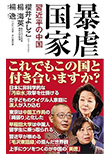With Kim Jong-il’s Death, Now Is the Time for Japan to Dauntlessly Pursue Resolution of the Abduction Issue
North Korea’s Kim Jong-il is dead. His death reportedly came on December 17. Now, the world’s main focal point is whether Kim Jong-un, the late leader’s successor, is able enough to shoulder the responsibilities of leading the country.
Professor Tsutomu Nishioka of Tokyo Christian University, who serves as a planning committee member of the Japan Institute for National Fundamentals (JINF), a private Tokyo think tank, predicts the Kim Jong-un administration will be short-lived, explaining:
“There are two main forces in North Korea opposed to Kim Jong-un today. One is centered around the top echelon of the North Korean Workers’ Party and the military, who aspire to gain clout by sustaining the nation’s one-party dictatorship through effective adoption of Chinese-style reform and more open policies.
“The other is made up of the so-called ‘market forces’ 窶錀 those citizens who have been forced to be economically self-sustaining since the mid 1990s, when the North Korean government suspended distribution of food to its people. Nobody can guarantee that there will not be mass anti-government demonstrations 窶錀 similar to those instigated in Lybia and Russia 窶錀 by these citizens, who account for some 80 percent of the population.
With the birth of the Kim Jong-un regime, the North Korean situation could ツꀀundergo drastic changes at any time, and particular attention must be paid to the actions of China and the US. China is particularly concerned about possible US moves to increase its influence over the Korean Peninsula as well as the possibility of a huge influx of North Korean refugees into China. Prof. Nishioka stresses that one should not overlook the fact that China is the only nation in the international community that has maintained that, in time of emergency in the Korean Peninsula, it has the prerogative to dispatch an expeditionary force, as stipulated in the mutual defense treaty signed with North Korea in 1961.
The US and South Korea have been making political, diplomatic, and military preparations to guard against unexpected developments in the peninsula, specifically to prevent China from acting recklessly as it seeks to preemptively address the potential refugee issues as well as thwart US involvement in the current situation. On the other hand, the most urgent task for the US and South Korea 窶錀 and for Japan as well 窶錀 is prevention of proliferation of nuclear weapons by North Korea. Delivery of North Korean nuclear weapons to third parties must be blocked at all costs, with Japan making its share of contributions towards materializing the reunification of a free and democratic Korean Peninsula under South Korean leadership.
At the same time, Japan must put the highest priority on the rescue of its citizens abducted by North Korea. For that purpose, Japan must forge ahead with gathering information, including the whereabouts of the abductees, in close cooperation with the US and South Korea. The government’s Headquarters for the Abduction Issue has been collecting information on a total of 271 Japanese citizens the police suspect of having been abducted by North Korea. I earnestly hope that, should there be circumstances under which the US and South Korean forces decide to march into the North, they will allow Japanese government personnel to accompany them so they can utilize the string of information hitherto gathered as they attempt to rescue the Japanese abductees. It would also be necessary to make arrangements with the US and South Korean governments for a dispatch of transport aircraft from the Japan Self Defense Forces.
“Full of Fabrication”
When the time comes for such operations, the Japanese should hold firm to the premise that the abductees are still alive. As regards this point, the remarks made by Jang Chul-hyun during the Japan-South Korea seminar in Tokyo on December 12 were extremely convincing. Jang was a high-ranking official of an anti-South espionage outfit run by the North Korean Workers’ Party, known as the Unification Front Department (UFD). The late Chairman Kim took him into his confidence, which enabled him to avail himself of classified information.
In 2004, Jang defected to South Korea. He told the audience:
“According to the North Korean government, Megumi Yokota was hospitalized for treatment of mental instability, subsequently committing suicide. However, the assertions by North Korea have been inconsistent throughout. Why? Because she is far from dead. They have resorted to a very slipshod logic in trying to dramatize the death of a living person.
“Megumi is a foreigner whose life is rigidly controlled by the anti-South espionage outfit to which she belongs. Her husband is a South Korean abductee who has also worked as an anti-South agent. They are both foreigners living under the tight control of anti-South intelligence organizations. Therefore, if they become ill, they should be admitted to and treated at Hospital 915 窶錀 a treatment facility specifically for anti-South agents and their families. However, the North Korean explanation was that Megumi entered Hospital 49, which is actually a sub-standard hospital for average North Korean citizens .
“If what they claim is true, then it means the espionage organization stopped controlling Megumi’s life, which is highly unlikely in North Korea.”
Jang says North Korea’s reference to her death certificate is also questionable.
“The date on which the death certificate was prepared is the same date as that of Megumi’s demise, which was March 13, 1993. In North Korea, death certificates aren’t drafted for the family. Rather, they are written up as a report to the resident registration body in charge of the patient, or to a party committee responsible for the patient. In other words, a death certificate is issued strictly for the convenience of the authorities that control the people. In a country where the transport and communications infrastructure leaves much to be desired, with the staff permanently fatigued, processing a person’s death certificate on the same day as his death can hardly be imagined 窶錀 unless there is some sort of special purpose. That is to say, there is a high possibility that the information the North has provided concerning Megumi’s death is full of fabrication.”
I find Jang’s assertion quite convincing in that I also view it as totally unthinkable 窶錀 in a nation whose entire national system has virtually stopped functioning 窶錀 that Megumi’s death certificate was drafted precisely on the same day that notification of her death was made to the authorities
Jang also questioned the supposed site of Megumi’s burial. The North Korean government owns all of the land throughout the country. Both mountains and plains are fundamentally used for agricultural purposes, individual citizens not permitted to build tombs of their own. When a government clerk dies, he is buried in a grave designated specifically for the staff of the organization he worked for. Therefore, Megumi should have been buried in a graveyard in the Sunan district, designated for the staff 窶錀 and their families 窶錀 of anti-South outfits.
“Initially, Megumi was allegedly buried in a mountain behind her hospital,” noted Jang. “But building a tomb near the hospital itself is totally unimaginable as it violates North Korea’s environmental hygiene law. Megumi’s husband claimed to have subsequently dug up her remains and cremated them. But that is also unthinkable in a country where a common idea prevails that to bury a person twice is to kill him twice. Also, there are barely more than two crematories in North Korea. As a matter of fact, even high-ranking party officials must be put on the waiting list before being eventually cremated. It is simply impossible to imagine that Megumi’s husband might have had enough clout to expedite his wife’s cremation. Also, keeping a deceased person’s remains at home is absolutely unpardonable in North Korean society. This is because the deification of Kim Jong-il has been carried to such an extent in North Korea that such (Confucian) practices as getting together to honor and fondly recollect the deceased among family members is strictly prohibited.”
It is a well-known fact that North Korea informed Japan after the 2002 summit in Pyongyang of its revision of Megumi’s date of death from March 13, 1993 to April 13, 1994. Jang surmised that, if Megumi really passed away in 1994, the North Korean side would have based their claims on nothing but facts and worked out a thorough strategy for the 2002 summit. Jang continued:
The Abductees Are All Alive
“The North Korean side was so eager to find a way to avoid publicly apologizing for the abductions while trying desperately to squeeze funds exceeding \1 trillion from Japan that the Foreign Ministry failed to anticipate, or properly analyze, what adverse political impact the concocted story of suicide ツꀀwould create, especially given that the woman in question had been abducted from her home country at the tender age of 13. Such a diplomatic blunder was quite unexpected in view of the high level of diplomatic skills North Korea had demonstrated with other critical issues.”
Jang quoted Kim Jong-il as often referring to Japan as follows:
“You can get through to the Americans even by lying, as long as you lie logically, but to the Japanese you can always get through by appealing to their emotion.”
“If that was how Kim had confidently interpreted the characteristics of the Japanese, he should have employed an emotional diplomatic approach to Japan, such as by making compassionate remarks about Megumi’s death to appease her aging mother. However, no trace of this kind of effort was visible from Kim. That to me is convincing proof that Megumi is far from dead. She is very much alive.”
I also believe firmly that not only Megumi but also Keiko Arimoto and Rumiko Masumono, to name just a couple from among the long list of abductees, are alive somewhere in North Korea today. The administration of Prime Minister Yoshihiko Noda must make up its mind expeditiously and resolutely to fully cooperate with the U.S. and South Korea in exploring ways to rescue every one of the abductees anxiously waiting to return home.
(Translated from “Renaissance Japan” column no. 491 in the December 29, 2011 issue of The Weekly Shincho)















